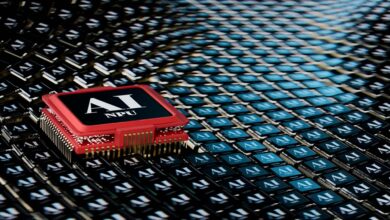Next-Gen Logistics: How Dananjayan Thirumalai’s AI Innovations Are Paving the Way for Smarter Delivery Services

Successful, forward-thinking logistics are the key to creating today’s billion-dollar companies like Amazon and DoorDash.
And if these companies and the others that want to follow in their footsteps are to carry on being the juggernauts of our age, then applying Artificial Intelligence to their delivery services is going to be the key.
One man forging that key is Dananjayan Thirumalai, who has worked at both companies on AI-driven logistics. The former Amazon software development engineer and tech lead, a DoorDash staff engineer, leads the charge towards smarter, more efficient delivery services.
With his groundbreaking work at DoorDash, the on-demand delivery platform, and the everything store Amazon, Dananjayan’s contributions are revolutionizing how goods are delivered, making the process faster, more reliable, more personalized and customer-centric.
The Anna University, Chennai, India, graduate who went on to gain a Master’s also in computer science at Arizona State University is now focussing on leveraging Artificial Intelligence to address the complex challenges of modern delivery systems.
“I’ve worked for Amazon and DoorDash, both e-commerce delivery giants,” reveals Dananjayan. “At Amazon, I led multiple teams, including the sponsored products team, where I was a founding member, the content optimization and personalization team and the Alexa speech recognition team.
Revolutionizing Delivery with AI: The DoubleDash Success Story
Dananjayan has been involved with leading teams for DoubleDash, Group Orders and the Consumer platform team with DoorDash, all of which are significant revenue-generating initiatives for the company.
“I am privileged to be part of the founding team of DoubleDash, our bundling platform, an industry-first multi-store shopping experience in the logistics space,” says Dananjayan.
He was also involved in another industry-first with the company – Group Orders: “It’s a social shopping experience where you create carts and share them with your colleagues and families for events and meetings. I am proud of my work on Group Orders; it’s focused on large-order use cases.”
In addition, Dananjayan was involved in migrating the monolith to micro-services architecture and a DashPass product, Doordash’s subscription program.
He says: “I enjoy working with hyper-growth teams at the starting point, helping them grow and solve complex problems, and I have had great opportunities with both DoorDash and Amazon to do that.”
“The end goal is to create a seamless experience for the end customer, where their needs are anticipated and met precisely,” he explains.
Dananjayan is a highly sought-after expert in AI engineering because his work focuses on using machine learning to optimize every aspect of the shopping process, from personalized recommendations, merchandising, route planning, and logistic optimization to real-time tracking, customer satisfaction, and support tools.
At DoorDash, Dananjayan spearheaded the development of the bundling system called “DoubleDash,” which allows customers to receive deliveries from multiple stores in one go: “We wanted to create a system that not only meets the customers’ needs but also benefits the dashers and merchants,” he reveals.
Traditionally, customers would place separate orders from different stores, resulting in multiple deliveries and increased wait times. Dananjayan’s elegantly simple solution changes this by enabling the tech architecture to combine multiple orders delivered as one.
“DoubleDash uses AI algorithms to determine the most personalized and efficient way to combine orders, ensuring that customers receive their favorite items promptly while maximizing earnings for Dashers and minimizing costs for Doordash.”
“DoubleDash optimizes delivery routes and assigns the fastest driver on route, reducing wait times and improving overall efficiency,” he explains. This system enhances the customer experience and allows dashers to earn more by handling multiple deliveries in one trip.
“For example, you can order food from a restaurant and add groceries or other items from a convenience store. This multi-store shopping concept is like a virtual mall on your phone. We started this idea from scratch and faced many challenges, but it’s now a feature my family and I use regularly. It’s very satisfying when my wife uses it and finds it helpful.”
He adds: “It’s a win-win situation for everyone involved.”
The success of the DoubleDash can be seen in its widespread adoption and positive feedback from users. Customers appreciate the convenience of receiving all their items at once, while dashers benefit from increased earnings and more efficient routes.
“It’s about creating a smarter, more connected delivery network,” Dananjayan says.
From Monolith to Microservices: Scaling DoorDash for the Future
Dananjayan has also played a crucial role in transitioning DoorDash’s
monolithic system to a microservices architecture, which allowed for greater scalability and reliability.
“Handling tens of thousands of requests per second requires a robust and efficient system,” he explains.
“This shift enabled us to handle increased traffic as more users started using Doordash.”
But the engineering extraordinaire has had a big impact not just at DoorDash. Dananjayan has also significantly contributed to the systems at Amazon, one of the world’s largest e-commerce platforms. While working at the company, he developed personalized content optimization systems, including item and image recommendations.
Using Machine Learning (ML), Dananjayan and his team developed algorithms that analyze customer behavior and preferences to make tailored recommendations: “We aim to provide a personalized experience for each customer, anticipating their needs and suggesting items they might want,” he explains.
“For instance, the system can predict when a customer might be running low on a particular item based on their past orders and suggest adding it to their next delivery. “This level of personalization enhances the customer experience and drives sales for merchants,” Dananjayan adds.
Personalization at Scale: Impact at Amazon
One of the key projects Dananjayan led at Amazon was enhancing Alexa’s ordering capabilities. By quickly improving speech recognition accuracy and understanding new terms, Dananjayan’s team made it easier for customers to place orders using voice commands.
“Alexa was able to recognize new keywords and adapt within hours, ensuring that customers have a seamless experience,” he says.
The COVID-19 pandemic posed unprecedented challenges for logistics companies, with a sudden surge in demand as people turned to online shopping and delivery services. Dananjayan’s expertise was instrumental in helping DoorDash and Amazon navigate these challenges and scale their operations effectively.
“During the pandemic, we saw a three to five times increase in traffic at DoorDash,” Dananjayan recalls. Our systems were designed for smaller traffic, so we had to scale quickly. Moving from a monolith to multiple microservices was a huge undertaking.
“We monitored traffic constantly and worked hard to ensure the website stayed up.
“Now, new engineers at DoorDash can focus on specific systems without worrying about scalability issues.”
By leveraging AI and machine learning in the highly scalable architecture, Dananjayan and his team could optimize delivery routes, manage driver assignments, and ensure timely deliveries despite the increased demand.
At Doordash, the transition to a microservices architecture proved crucial in handling the spike in orders. “We monitored traffic constantly and worked around the clock to ensure that our systems stayed up and running,” Dananjayan says.
The resilience and scalability of the new system allowed Doordash to meet customer expectations even during peak times.
Kai Hsiao is a Staff Engineer with Doordash who first worked with Dananjayan in 2020. He has seen firsthand how Dananjayan can make operations run smoothly.
Citing his colleagues ‘superpowers’ as an engineer, Kai reveals: “His first is collaboration; he is a very collaborative person, always coming up with many ideas and willing to help the team, whether we are on the same team or working on the same product.
“At DoorDash, it’s a very dynamic environment where you have to talk to more people than you might think to get a task done. He can observe and move forward from other angles, not just his own. This makes it easier to move the team in the same direction. Sometimes, conflicts arise not from hard issues but from different perspectives, and he can always find a balance and move the whole team forward.”
Kai adds: “The second superpower Dananjayan has is his technical expertise, where he can provide both high-level and low-level guidance and efficiency to whatever technical assignment he has.”
Dananjayan’s expert skills as an engineer are also evident in multiple ways.
Kai reveals: “From an engineering perspective, his planning skills are excellent. He considers as many factors as possible, both known and unknown, when coming up with a plan. Providing a precise ETA is challenging because so many things happen in parallel. From a product perspective, Dananjayan is great at brainstorming. He thinks from a user’s perspective, not just an engineer’s, which adds much value to the product.
Kai adds: “Given the size of the US market, he can have a significant influence on worth, scale and profits, which would not only benefit the market but also add substantial economic value.”
Mentorship and Beyond: Shaping the Future of Engineering
Looking ahead, Dananjayan envisions even greater integration of AI in logistics to enhance efficiency and customer satisfaction: “The potential of AI is immense,” he says. We are only scratching the surface of what can be achieved.”
Dananjayan is particularly excited about the possibilities of using large language models and advanced machine learning techniques to improve predictive analytics and personalization. “Imagine a system that not only anticipates what you need but also when you need it before you even realize it yourself,” he says.
He also sees opportunities for AI to play a larger role in sustainability efforts. “By optimizing delivery routes and reducing unnecessary trips, we can significantly lower our carbon footprint,” Dananjayan explains. “AI can help us create more sustainable logistics practices that benefit both the environment and the bottom line.”
Beyond his technical contributions, Dananjayan is passionate about mentoring the next generation of engineers.
“Mentoring is incredibly important to me,” he says. “I want to help others develop their skills and achieve their potential.” He has mentored numerous engineers at DoorDash and Amazon, helping them grow and take on leadership roles.
Dananjayan also judges industry awards and reviews technical design architecture from multiple teams, ensuring the highest standards are maintained. “It’s about helping others find blind spots and innovate faster as a team,” he says.
Dananjayan’s innovations in AI-driven logistics are paving the way for more intelligent, more efficient delivery services. From his work at DoorDash, developing personalized bundling and group ordering product features and enhancing scalable systems, to his contributions at Amazon, with personalized image and item recommendations, ML-based sponsored products and smarter voice order capabilities, Dananjayan’s impact is undeniable.






